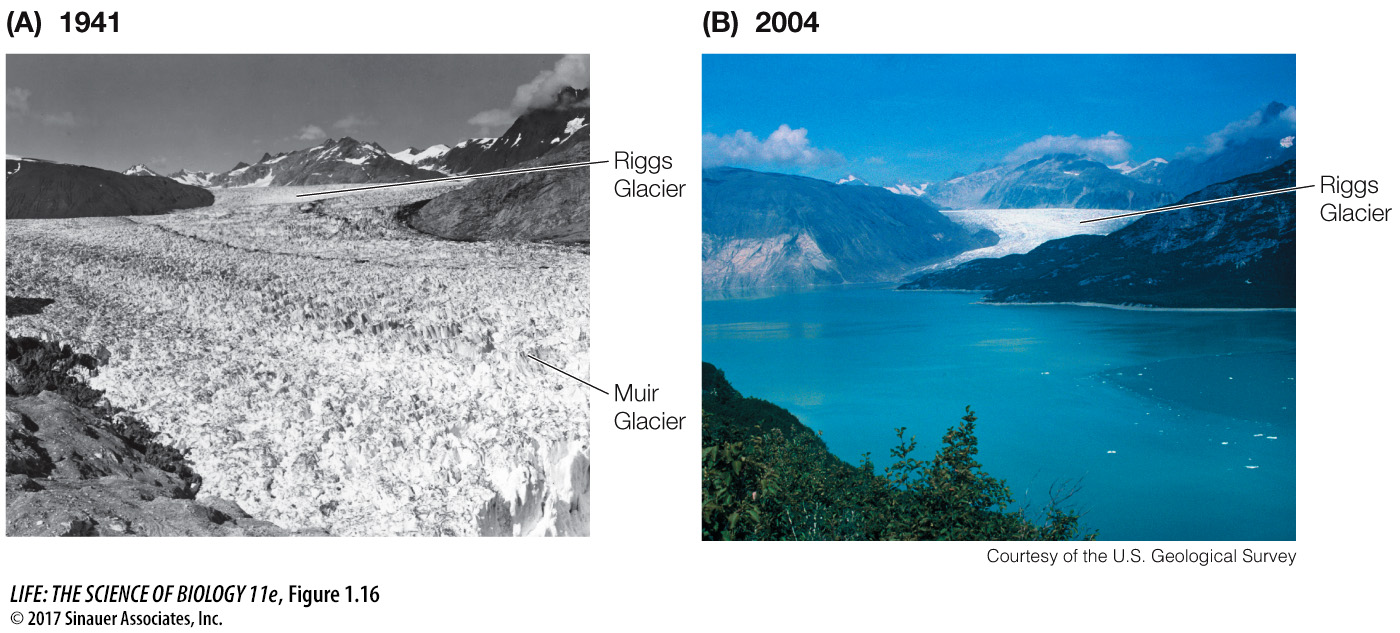Biology is crucial for understanding ecosystems
Earth has been changing since its formation and continues to change. Human activity, however, is resulting in an unprecedented rate of change in the world’s ecosystems. For example, the mining and consumption of fossil fuels is releasing massive quantities of carbon dioxide into Earth’s atmosphere. This anthropogenic (human-generated) increase in atmospheric carbon dioxide is largely responsible for the rapid rate of global climate warming recorded over the last 50 years (Figure 1.16).

Figure 1.16 A Warmer World Earth’s climate has been steadily warming for the last 150 years. The rate of this warming trend has also steadily increased, resulting in the rapid melting of polar ice caps, glaciers, and alpine (mountaintop) snow and ice. (A, B) These photographs shows the effects of 63 years of climate change on two ancient, longstanding glaciers in Alaska. Over that time, Muir Glacier retreated some 7 kilometers and can no longer be seen from the original vantage point. Understanding how biological populations respond to such change requires integration of biological principles from molecular biology to ecosystem ecology.
Our use of natural resources is putting stress on the ability of Earth’s ecosystems to continue to produce the goods and services on which our society depends. Human activities are changing global climates at an unprecedented rate and are leading to the extinctions of large numbers of species (such as the reef-building corals featured in this chapter). The modern, warmer world is also experiencing the spread of new diseases and the resurgence of old ones. Biological knowledge is vital for determining the causes of these changes and for devising policies to deal with them.
